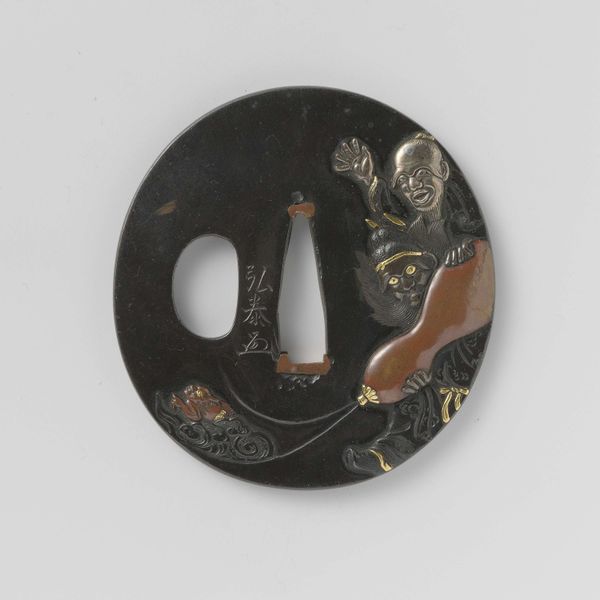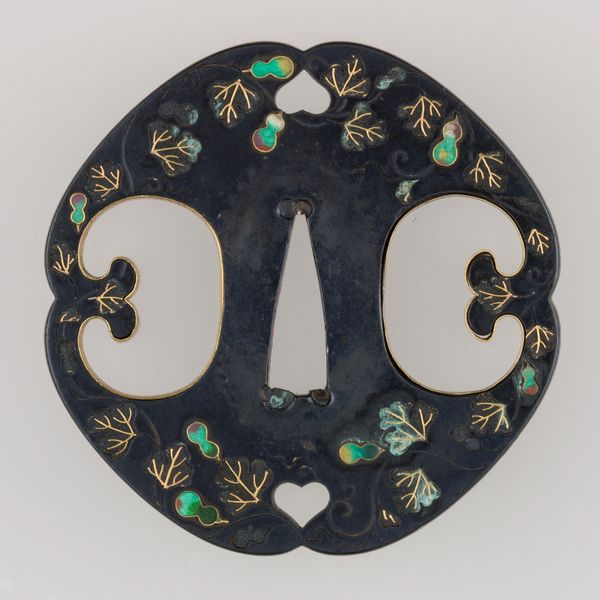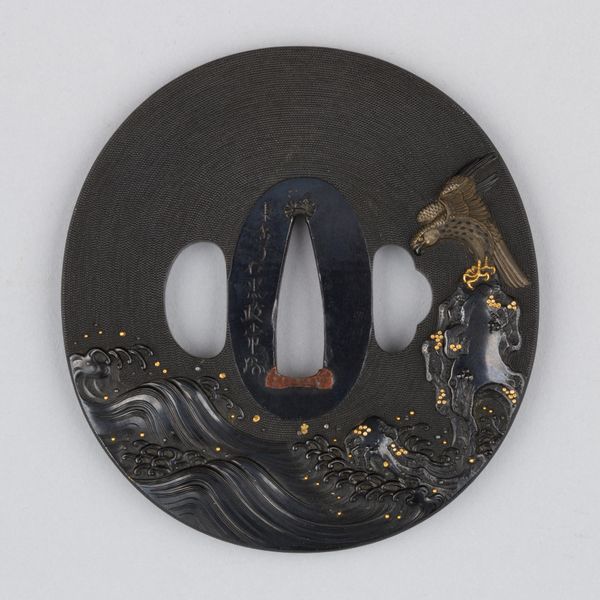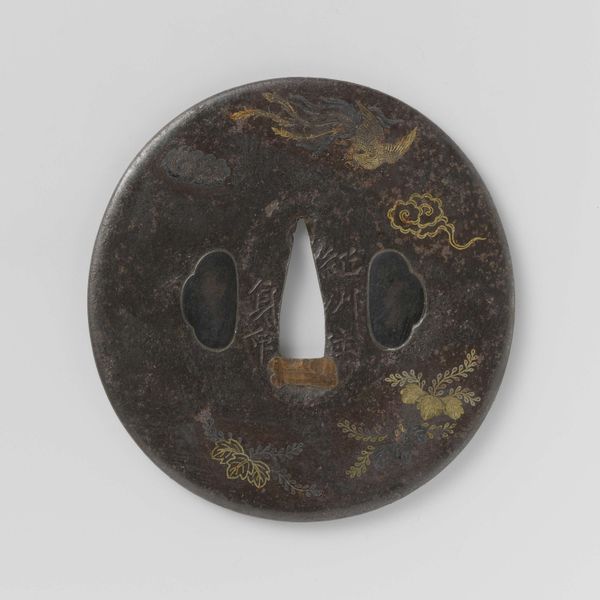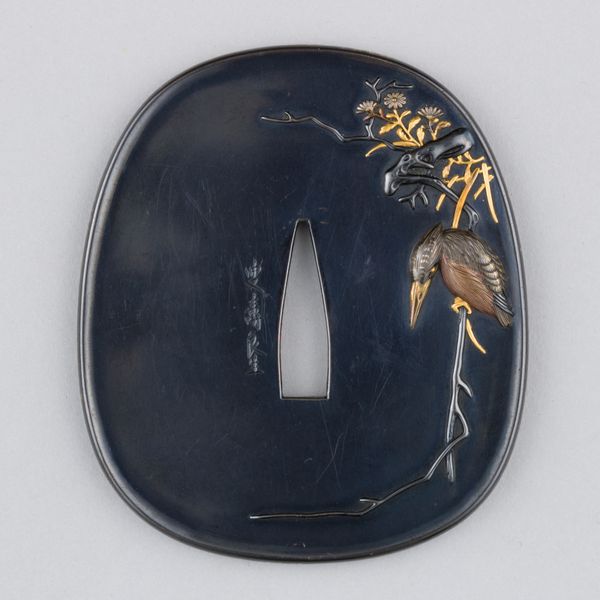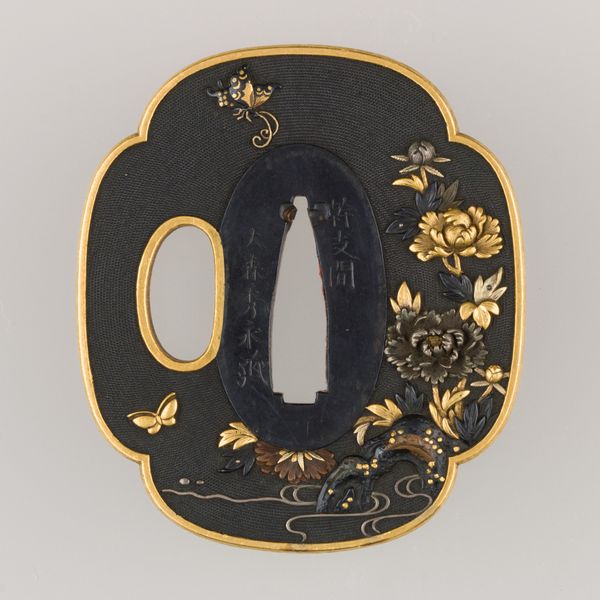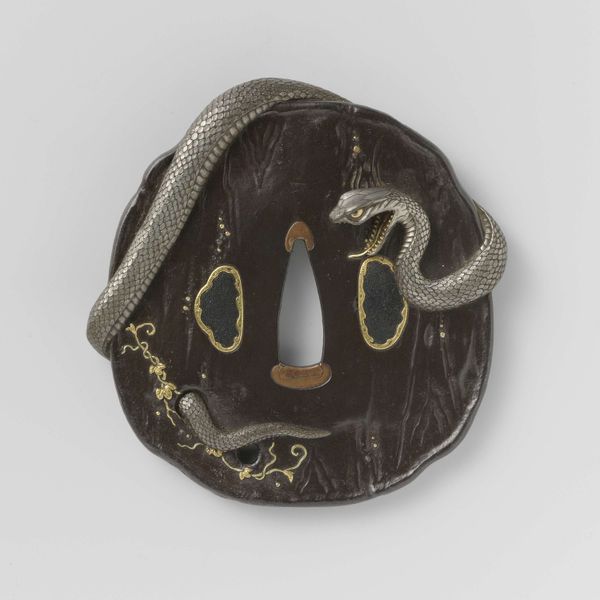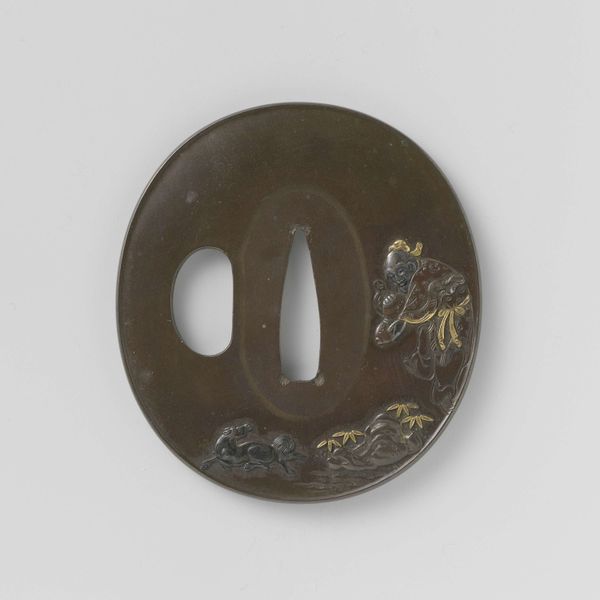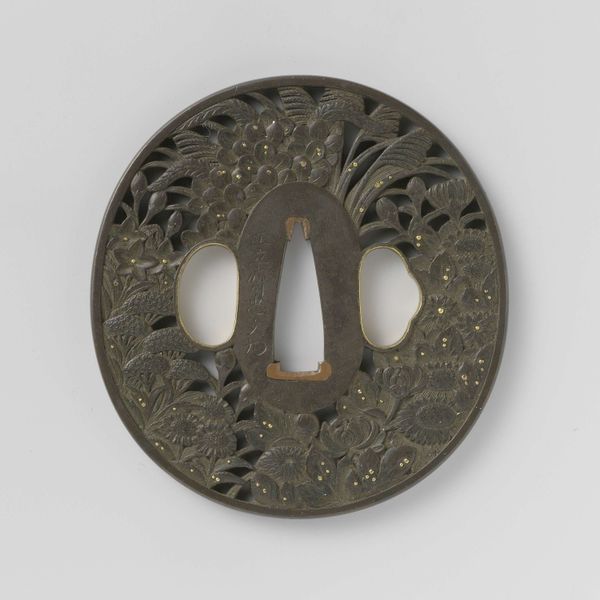
ornament, metal, intaglio, sculpture, engraving
#
ornament
#
metal
#
intaglio
#
sculpture
#
asian-art
#
japan
#
sculpture
#
engraving
#
sword
Dimensions: H. 2 7/8 in. (7.3 cm); W. 2 3/4 in. (7 cm); thickness 5/16 in. (0.8 cm); Wt. 4.5 oz. (127.6 g)
Copyright: Public Domain
Curator: This exquisite sword guard, or tsuba, dates back to 1840-1860. It’s the work of Ishiguro Koreyoshi, a master craftsman, and we're fortunate to have it here at The Met. Editor: Immediately, I’m drawn in by the sheer elegance of it, like finding a delicate poem etched onto something meant for battle. It’s darker overall than I imagined, with these radiant pops of gold. How tiny is it, really? Curator: It's relatively small, designed to fit neatly around the sword's handle. Think of it as both a functional element and a canvas for incredible artistry. Look at the intaglio work and engravings—such minute details! You see the birds and the bloom ornamenting it, right? Editor: Absolutely. The birds… are they perhaps symbols? Is one a pheasant, perhaps? I am immediately getting some symbolism around beauty, longevity, natural order…. Am I off base? Curator: Not at all! In Japanese art, these motifs are brimming with symbolic meaning. The pheasant, for instance, is often associated with courage and maternal love. Peonies suggest wealth and prosperity. Together they're speaking to a world of virtue and wellbeing. Editor: So much intent for something so seemingly... utilitarian. It really gives you a different perspective, imagining the owner, this warrior poet maybe, carrying these layered meanings with them into battle. Curator: Exactly. The tsuba wasn't merely protection; it reflected the owner’s spirit and aspirations. And remember, it represents mastery too: the techniques passed down through generations and each detail carved here had significance. The artist even signs their work – do you see the inscription within the central panel? Editor: I do. It’s as if Koreyoshi wanted us to consider, even after all this time, the meticulous detail that goes into something both profoundly aesthetic and utterly functional. So how does knowing more about its role and cultural context reshape that initial reaction of beauty I felt when I first saw the object? Curator: I feel it gives the beauty even greater weight. We move from merely appreciating something visually attractive to engaging with the object and history. In my mind it shows the synthesis of artistic intent and spiritual reflection in such small detailed creation that remains resonant for all of us today. Editor: For me, it really makes the item and its creator both seem alive and speaking in the now! You really sense a lineage there. It’s this silent poem about culture being communicated across the ages, which has such power to echo still.
Comments
No comments
Be the first to comment and join the conversation on the ultimate creative platform.


